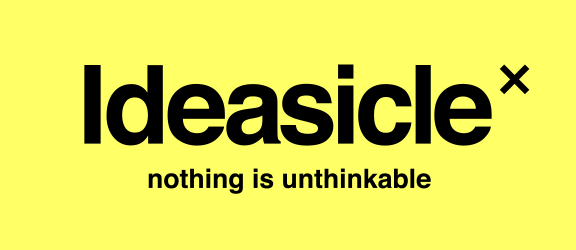Online Disinhibition: Horrible For Twitter, Wonderful For Virtual Creativity
Photo by Yan Krukov
Twitter is a minefield of flame throwers, harsh criticism, and downright bullying. People say things on Twitter (or other social media) they would never say to someone’s face. What is it about “virtualness” that brings out the worst in us? Especially because my experience is that the virtual nature of Ideasicle X is really good for creativity. But after reading Professor of Psychology at Rider University, John Suler's, The Psychology of Cyberspace, I believe both the vitriol of Twitter and the magic of virtual idea generation are caused by precisely the same thing. A little thing called “online disinhibition.”
Online disinhibition defined
The online disinhibition effect is defined as the lack of restraint one feels when communicating online in comparison to communicating in-person. Key words, “lack of restraint.” When people communicate online they are looser, more liberated, less reminded of the physical constraints that normally govern our behavior. When it comes to Twitter this feeling of anonymity tends to bring out an unvarnished honestly normally reserved to internal monologue. For online creativity, it liberates the participating creative team.
But why does this happen? I’ve been speculating for twelve years as to why, but John Suler lists several reasons for online disinhibition. Here are my three favorites.
See You Later (asynchronicity)
One reason online communication is disinhibiting is the fact it’s often asynchronous, meaning you post something now on social media and it may be hours before anyone reads it and responds. Suler suggests that doing so is like “running away” after posting what might be a sensitive or bold opinion. Once it’s posted you can close your browser and go do something else leaving the opinion to do its damage without your witness. But on the positive side he also says that because online communication is asynchronous people can actually think through their responses without the pressure of in-person, realtime expectations.
Ideasicle X is entirely asynchronous. A brief is posted, the team is invited, and they can post ideas whenever and wherever they want. Riffing on Suler’s work, what I think this does is two things: one, it provides that inhibition of running away, which in the case of creativity means the team is more likely to post something they’re afraid to post (bad ideas are necessary in the chaos of creation); two, the rest of the team gets pinged with this new idea and have time to think about it before posting a build or a comment. All of which leads to better, faster idea generation.
It's Just a Game (dissociative imagination)
Suler talks about how the online world can feel like an imaginary space, one that is divorced completely with reality, and one that has its own characters and life forms. As he put it,
People may feel that the imaginary characters they "created" exist in a different space, that one's online persona along with the online others live in an make-believe dimension, a dream world, separate and apart from the demands and responsibilities of the real world.
Of course, Suler is explaining why rude behavior exists online, but I would argue (and have) that this same dynamic improves the creative process.
In fact, I always say in every Ideasicle X demo that an Ideasicle X idea project is like working in a different dimension where the team works on the assignment in the in-between times of their day. I have literally said those words many times. And because it feels like a different dimension, or different reality, disinhibition in the creative process takes place. Fearless creativity.
We're Equals (minimizing authority)
When I read this one I about hit the floor. Another thing I always say in my pitches is that “Everyone on the team is reduced to a typeface.” My point being that no one can out-shout each other, no one can posture, and all power dynamics are eliminated. What’s left are the teams ideas and the ideas alone. And that eliminates social pressure and the resulting apprehension and fear.
As Suler put it,
While online a person's status in the face-to-face world may not be known to others and it may not have as much impact as it does in the face-to-face world. If people can't see you or your surroundings, they don't know if you are the president of a major corporation sitting in your expensive office, or some "ordinary" person lounging around at home in front of the computer. Everyone - regardless of status, wealth, race, gender, etc. - starts off on a level playing field.
Boom. Exactly right. And I am absolutely certain that stripping away the power structures between team members decreases fear and increases creativity.
Fear is kryptonite to creativity
What all of these points by Suler point out is that when communicating online, people experience less fear. When on Twitter, less fear means one is more likely to flame, criticize, and bully. But when on Ideasicle X, less fear means more original ideas are posted, more builds are posted, and exponential ideas.
So we’ll keep our online disinhibition just the way it is, thank you very much.
Will Burns is the Founder & CEO of Ideasicle X. Email him at willb@ideasiclex.com.


